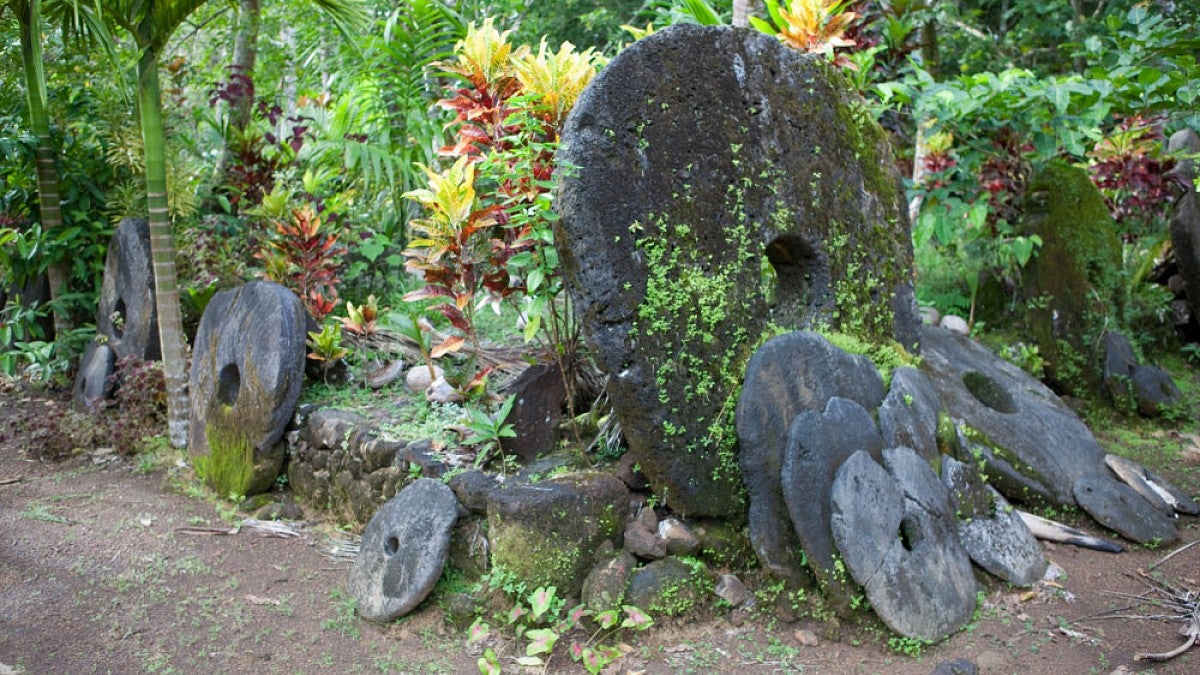Many investors compare Bitcoin to gold as a store of value, even referring to Bitcoin as “digital gold,” a comparison believed to be one of the drivers of Bitcoin’s meteoric rise over the past several months.
But according to a paper by researchers at the University of Oregon, Bitcoin may be less like gold and more similar to ancient stone money.
In “Banking on Stone Money: Ancient Antecedents to Bitcoin,” published in January 2020 in the journal Economic Anthropology, Scott M. Fitzpatrick of the University of Oregon Department of Anthropology teamed with Inman Research Scholar and finance professor Stephen McKeon of the Lundquist College of Business to explore Bitcoin’s precedents as “rooted in the ancient past, which involved the production, movement, and use of traditional forms of ‘currency,’ the most visible and prominent of which were the famous stone money of Yap.”
In the paper, the authors discuss Bitcoin’s origins and its consequences for global commerce, highlighting what might be learned by studying ancient stone currency. In particular, they note that the underlying technology powering Bitcoin, known as the blockchain, has much in common with the ledgers Yapese islanders used to document ownership of their enormous stone coins.
Satoshi Nakamoto, a pseudonym adopted by an anonymous individual or group, introduced the concept of Bitcoin in a white paper distributed to members of an internet mailing list devoted to cryptography. In the paper, Nakamoto outlined a peer-to-peer virtual currency network where highly secured distributed ledgers, known as the blockchain, would be used to document transactions and currency ownership.
Further, new Bitcoins could be created or “mined” by computers validating those cryptographic ledgers when Bitcoins changed ownership. The rate of creation of new Bitcoins was built into the protocol, so that inflation is capped and known in advance.
Similarly, for centuries Yapese islanders in what is now known as Micronesia, sailed hundreds of kilometers to mine limestone they fashioned into enormous stone sculptures known as rai and used as currency. Those stone coins were so heavy that islanders drilled holes through the center so they could be carried on long poles. The tradition predates European contact with the Yapese in 1783 and formed the basis of their monetary system.
While it might seem like a giant stone coin would have little in common with Bitcoin, which has no physical presence, the sheer weight and difficulty of moving the rai from one holder to another creates a startling similarity.
An owner of a rai might not take physical possession of it. They might leave it on the side of a road or leave it with its original owner who has bartered it for some good or service. So, the Yapese created an oral ledger of ownership for each rai, in effect a precomputer blockchain to detail the origin of each piece of stone money, its transactions and its ultimate holder.
“Given that the actual possession of rai was often infeasible, an owner would deem it to be valuable only if they could trust that all participants in the economic system agreed on the record of ownership,” Fitzpatrick and McKeon write. “Effectively, it was not a bearer asset; ownership was established solely through the ledger. Similarly, Bitcoin is often referred to as ‘trustless.’ It is notable that it emerged during one of the worst economic recessions in recent history, a time during which trust in the financial system was at a historic low.”
Other similarities with Bitcoin follow. The difficulty of mining limestone, fashioning it into rai and then transporting the currency helps to limit supply and to create scarcity that prevents inflation. Bitcoin is mined by computers solving complex math problems at great and growing expense.
There are some differences, of course. Bitcoins can be divided into smaller units while the Yapese had no system for spending smaller denominations of rai by breaking them into pieces. With Bitcoin, holders can be as anonymous as Satoshi, whereas the Yapese system functions based on a ledger where all participants to transactions are known by their real names.
Finally, all Bitcoins are equal. A rai, however, derived specific value from its size and craftsmanship, adding an element of artwork to the currency.
It isn’t known if Nakamoto or his collaborators considered the Yapese, or ancient currencies, in their Bitcoin design. But it is known that some of the principles behind Bitcoin have been validated by history and that might offer a clue about the longevity and uses of blockchain based cryptocurrency as an asset class.
—By Michael Maiello, for the Lundquist College of Business


